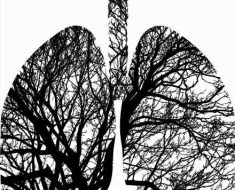
A year into the pandemic, with COVID-19 vaccines increasingly available and restrictions lifting on many businesses and activities, a return to normalcy appears on the horizon.
But we have to learn how to be “normal” again, said University of Washington psychology professor Jane Simoni. “It will be like learning how to ride a bike again—slowly and patiently. We have to show compassion and patience with ourselves, as we emerge from the lockdown at our own pace. For some, it might be hard to be around other people again at first. We’ll have to relearn some things once we’re vaccinated—that you can hug people, for example, and your first instinct won’t be to turn away instead. That you can make plans with people—and take time to actually follow through with those plans.
“We’re going to be living with COVID-19 in some way for the foreseeable future. As we come to trust our safety and security, it will be easier to re-learn to be social and to congregate in groups.”
Simoni has worked in the field of HIV research for much of her career, focusing on behavioral interventions that can help those living with HIV manage their illness.
The COVID-19 pandemic provides some parallels, Simoni said, in the ways people view a transmissible, potentially fatal virus: motivated by a fear of death and the desire for certainty and control. “Yet certainty and control are two things we do not have in this pandemic,” she said. “Guidelines and restrictions seem to change daily, and of course the virus itself is literally evolving.”
On people’s desire for quick “fixes” to a health problem, such as a one-time medication or a vaccine, rather than prevention:
“With all illnesses, there’s a search for an easy-to-understand, easy-to-execute, inexpensive solution—think of the bed net that can protect one from malaria-carrying mosquitoes. There isn’t necessarily anything wrong with looking for an easy fix. Some biomedical and tech solutions are easier to implement, because behavior is hard to change.
Look at HIV: Billions have been spent trying to get a vaccine, and we still don’t have one. Meanwhile, the behavioral changes that could help prevent HIV are known but harder to implement, because they involve intimacy and human behavior and emotions.
However, even when we have the biomedical and technological solutions, there’s still human behavior involved. It’s not enough to have medications, we have to take them. It’s not enough to have a vaccine; we have to vaccinate.”
On the value of positive public health messaging:
“Some public health messages involve scare tactics to discourage harmful behaviors such as smoking, using drugs or drinking and driving. It’s not that these approaches never work, but they often terrify people, push away the message and induce denialism. The more extreme reactions to COVID-19, such as the anti-maskers and anti-vaxxers, can be motivated by this denialism, fear and a desire to maintain their own freedom and control. An extreme variation of this denialism is the belief that the virus is a hoax.”
Source: Read Full Article





